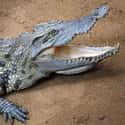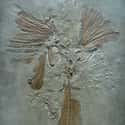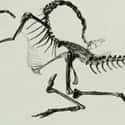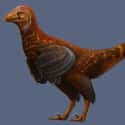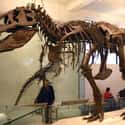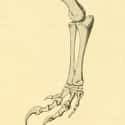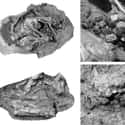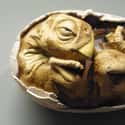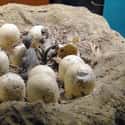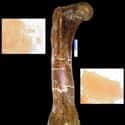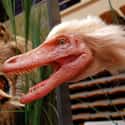-
(#1) First, Yes, There Are Many Similarities Between Reptiles And Dinosaurs
We should probably address the crocodile in the room: the obvious similarities between dinosaurs and reptiles.
Paleontologists’ understanding of dinosaurs has advanced considerably in recent decades, while our mental images of the ancient creatures have largely remained the same. This has everything to do with the lack of peer-reviewed scientific papers crossing the public’s desk, combined with inaccurate depictions of dinosaurs in movies and TV.
There are also general and technical misunderstandings about what a reptile is and is not. For example, a turtle is considered a reptile, while a frog is classified as an amphibian. Not dissimilarly, a lizard (reptile) and a salamander (amphibian) do not share a common recent ancestor, despite having a host of superficial commonalities. Furthermore, crocodiles are more closely related to birds than they are to snakes. If you’re sufficiently confused, you’re not alone. In fact, to avoid further befuddlement among the general public and academics alike, some have called for the complete removal of the word "reptile" from our classification system.
-
(#2) Birds Of A Feather Likely Evolved Together
Contrary to pervasive imagery, not all dinosaurs were gray and scaly. Some were clad in feathers - many likely showcasing colored plumages. This theory has been confirmed by a variety of dinosaur fossils found inlaid with feather impressions. Most of these fossils are from the theropod suborder - a bipedal dinosaur, which included some of the Jurassic’s largest and most ferocious carnivorous.
The first, and most famous feathered fossil, Archaeopteryx, is considered to be a transitional animal between dinosaurs and modern-day birds. At approximately a foot and a half in length, Archaeopteryx lived in the Jurassic period, donned advanced feathers, and likely had the ability to fly. Since its discovery in 1861, many more fossils from other kinds of dinosaurs have been found, showing that feathers were not rare among dinosaurs.
While feathers were one of the characteristics that eventually led to flight, it’s thought they first evolved as a way for dinosaurs to stay warm and/or attract mates. The non-avian introduction makes sense because many large and flightless dinosaurs, like the mighty Tyrannosaurus, also wore feathers.
-
(#3) The Wind Beneath Their Wings
Feathers are important for flight, but without wings, the dinosaurs would have stayed terrestrial animals. It’s believed theropod adaptations, including flexible scapulas and rotating wrists, helped pave the way for the development of wings. Picturing these early proto-wings, combined with a theropod’s plumage, it’s easy to imagine how these speedy animals could have used simple gliding and coasting to out-compete those in and out of their species before true flight was even possible.
-
(#4) Hollow Bones Made For Better Breathing
Dinosaur fossils showcasing hollow bones are not new. However, evidence pointing to their exact role and connection to modern-day birds is continually being revealed.
Hollow bones are one of the characteristics that make birds capable of flight. But this lightweight feature also helps birds to breath more efficiently. While humans and other mammals have diaphragms that allow their lungs to change in volume, birds (and their theropod ancestors) use bones along their rib cage called uncinate processes to help pump air in and out of their lungs. This respiratory distinction is thought to have made predatory theropods fast on their feet, and has given birds a conservation measure during the costly energy expenditure of flight.
-
(#5) Make A Wish On A Dinosaur - Because They Have Wishbones
Besides hollow bones, dinosaurs and birds share a variety of other skeletal features, including air spaces connected to the ear region, large orbital openings, as well as similarities in vertebrae, hindlimb, pelvic structures, and wishbones. Wishbones were once thought to be specific to birds. However, this union of right and left collarbones at the sternum is found in several theropods as well, dating back 150 million years.
-
(#6) Two Legs Are Better Than Four
All birds are bipedal - meaning they walk on two legs - which makes sense, considering their forelimbs are most often used for flight. However, even with popular dinos such as Tyrannosaur and Velociraptor around, most people fail to recognize that many dinosaurs were bipedal too. Whether dinosaurs started as bipedal, only evolving into quadrupeds when they grew too large, or they stood up on their hind legs to meet the demands and competition of their environment is still being debated.
-
(#7) Zero Out Of Four Chiropractors Approve Of Dino Posture
One of the reasons bipedalism isn’t always obvious in dinosaurs has to do with their elongated appearance - a more common characteristic of quadrupeds. And while there are notable exceptions like ostriches and flamingos, most modern-day birds also favor a more horizontal posture.
Crouched stances in theropods are thought to have started with the development of larger forearms. This adaptation, which may have allowed certain theropods to grasp with their claws, eventually led to the evolution of wings in avian-dinosaurs.
-
(#8) The Ankle Controversy
Not everyone buys the dinosaur-bird link and, for many years, naysayers pointed to the difference between dino and bird ankles. While dinosaurs showed an upward projection off of their ankle bone, birds showed this "ascending process" from their heel bone. This might seem like a small difference to non-paleontologists, but it’s been a point of contention for many studying the relationships between birds and dinosaurs.
Fortunately, for those distraught over the incongruity, a study done in 2015 shed light on the controversy. According to researchers, the ascension only appears to come from the ankle bone in dinosaurs and heel bone in birds. In reality, it originates from a third and shared bone in both animals called the intermedium.
-
(#9) Would You Like Rocks With Your Meal?
Gastroliths, also known as "gizzard stones" are rocks or pebbles an animal purposely swallows to aid with digestion. The rough and sharp rocks help break down the food in an animal’s stomach, eventually being vomited up and replaced by new stones when they’ve been rendered smooth. Fossils have revealed that several species of dinosaurs utilized gizzard stones. Gastroliths are found in some reptiles and marine animals, but most prominently in birds.
-
(#10) Q: What Came First, the Chicken or the Egg? A: Dinosaurs
Dinosaur eggs look so similar to bird eggs that when the first examples were unearthed in 1859, the fossils were mistaken for that of a giant bird. Theropod eggs share many features with modern-day bird eggs, including shape - round on one end and more pointed on the other - three major membranes, and shells made of calcium carbonate.
-
(#11) A Theropod’s Guide to Protecting Nest Eggs
While dinosaurs laid their eggs in nests, different dinos cared for their eggs in different ways. Many dinosaurs buried eggs under the dirt, but theropods laid their eggs in open nests - much like many of today’s birds. This instinct is thought to have led theropods to construct their nests in places other than the ground, possibly contributing to a higher rate of survival for their offspring.
-

(#12) Dutiful And Doting Parents
Fossils have shed light on the brooding behavior of dinosaurs and, once again, they display many similarities to birds. It’s thought some dinosaurs not only watched and protected their unborn children, but also kept them warm, and even fed the offspring after they hatched. What's even more incredible is that despite there being nearly 9,000 species of birds, almost all of them do the exact same things with their young.
-
(#13) Tastes Like Tyrannosaur
A study done in 2008 revealed molecular structures within the bone and tissue of a Tyrannosaurus were closely related to that of chickens. Collagen extracted from a Tyrannosaur fossil was compared with the protein sequences of 21 other modern-day species to establish an evolutionary relationship between one of the most feared carnivores to ever walk the planet and a domesticated bird that has become a staple of most American diets.
-
(#14) Latest Trend: Dino Facelifts
In 2015, scientists set out to understand how dinosaur snouts evolved into beaks. By inhibiting proteins responsible for affecting the expression of a unique set of genes found in birds, researchers were able to grow a chicken embryo with a dinosaur snout and palate. For ethical reasons, the eggs were never hatched, but it’s not thought that the modified nose would have affected survival. How society would have judged these chickens, however, is another matter.
New Random Displays Display All By Ranking
About This Tool
Dinosaurs lived about 235 million to 65 million years ago. This large animal that can walk upright has dominated the terrestrial ecosystem on earth for more than 160 million years. It is obvious that dinosaurs have been extinct, but the offspring of dinosaurs, birds have survived and have reproduced to this day. Except for proving the evolutionary relationship between dinosaurs and birds by the feature of feathers, there is other clear evidence that can be used to prove the origin of birds.
After a long debate and research, scientists have gradually agreed that birds and dinosaurs belonged to the same ancestor and that birds originated from a small carnivorous dinosaur capable of running fast. The random tool lists 14 pieces of evidence of birds are dinosaurs today.
Our data comes from Ranker, If you want to participate in the ranking of items displayed on this page, please click here.










